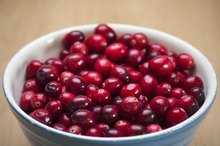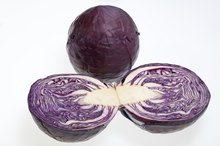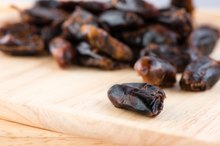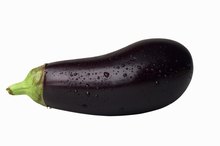What does fact checked mean?
At Healthfully, we strive to deliver objective content that is accurate and up-to-date. Our team periodically reviews articles in order to ensure content quality. The sources cited below consist of evidence from peer-reviewed journals, prominent medical organizations, academic associations, and government data.
The information contained on this site is for informational purposes only, and should not be used as a substitute for the advice of a professional health care provider. Please check with the appropriate physician regarding health questions and concerns. Although we strive to deliver accurate and up-to-date information, no guarantee to that effect is made.
Given Americans’ love of tomatoes, it may be hard to believe that early settlers shunned the vegetable, certain the fruit was poisonous. Since then, science has revealed tomatoes' antioxidants and other nutrients, including folate. Folate, the naturally occurring form of folic acid, is a B-complex vitamin 5. Different tomatoes offer different concentrations of folate. The U.S. Department of Agriculture gives you a general idea with a nutrition facts label for the year-round average tomato.
Folic Acid in Tomatoes
One medium tomato, 2 to 3 inches in diameter and weighing just over 4 ounces, provides 18.45 micrograms of folate.
Recommended Folic Acid Intake
Fruits That Do Not Contain Folate
Learn More
The Food and Nutrition Board of the Institute of Medicine says that newborns to 6 months of age need 65 micrograms of folic acid daily 2. Older babies require 80 micrograms. At 1 year of age, children should get 150 micrograms of folate. When they turn 4, give them 200 micrograms of folic acid in their diet every day 25. Increase the serving to 300 micrograms on their 9th birthday. From the age of 14 through adulthood, everyone needs 400 micrograms of folic acid daily.
Complementing Tomatoes
The concentration of folate in one average tomato falls short of the daily requirement for the nutrient for every age group. Instead of eating lots of tomatoes every day to meet the recommended intake, plan a varied menu that includes different sources of folate or folic acid throughout the day. Legumes such as chickpeas and lentils provide folate. Spinach and asparagus are also good sources. Some manufacturers fortify breakfast cereals, pasta, rice and bread with folic acid.
- The concentration of folate in one average tomato falls short of the daily requirement for the nutrient for every age group.
- Some manufacturers fortify breakfast cereals, pasta, rice and bread with folic acid.
Folic Acid’s Function
List of Roughage Foods
Learn More
Your body needs folic acid to produce cells and to keep them functioning properly. Tissue growth also depends on the nutrient. In addition, folic acid facilitates digestion and the making of new proteins 25.
Related Articles
References
- University of Illinois Extension: Tomato
- Linus Pauling Institute; Folic Acid; Jane Higdon, Ph.D., et al.; April 2002
- SkipThePie.org: Tomatoes, Red, Ripe, Raw, Rear Round Average
- SkipThePie.org: SkipThePie.org Frequently Asked Questions
- University of Maryland Medical Center: Folic Acid in Diet: Overview
- American Cancer Society. "Folic Acid."
- Harvard School of Public Health, The Nutrition Source. "Three of the B Vitamins" Folate, Vitamin B6, and Vitamin B12."
- Office of Dietary Supplements, National Institutes of Health. "Dietary Supplement Fact Sheet: Folate." http://ods.od.nih.gov/factsheets/Folate-HealthProfessional/
- Zhou YH, Tang JY, Wu MJ, Lu J, Wei X, Qin YY, Wang C, Xu JF, He J. "Effect of folic acid supplementation on cardiovascular outcomes: a systematic review and meta-analysis." PLoS One. 2011;6(9):e25142.
Writer Bio
Emma Watkins writes on finance, fitness and gardening. Her articles and essays have appeared in "Writer's Digest," "The Writer," "From House to Home," "Big Apple Parent" and other online and print venues. Watkins holds a Master of Arts in psychology.









